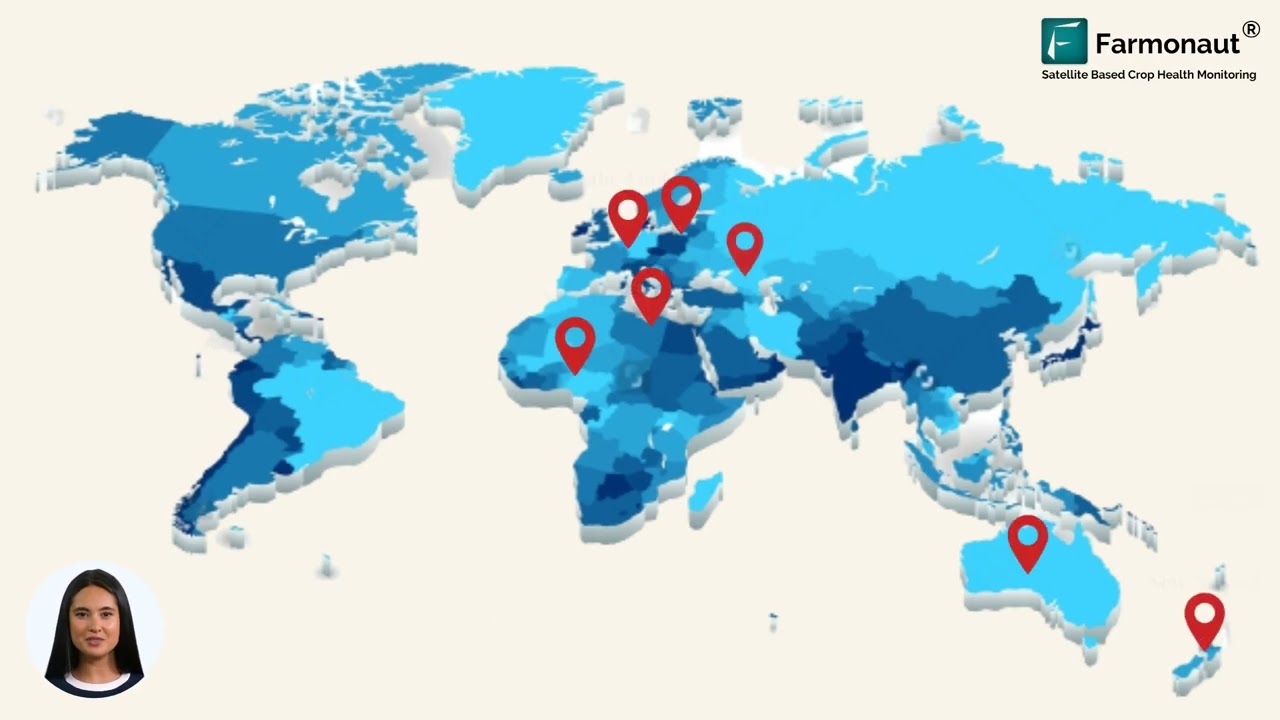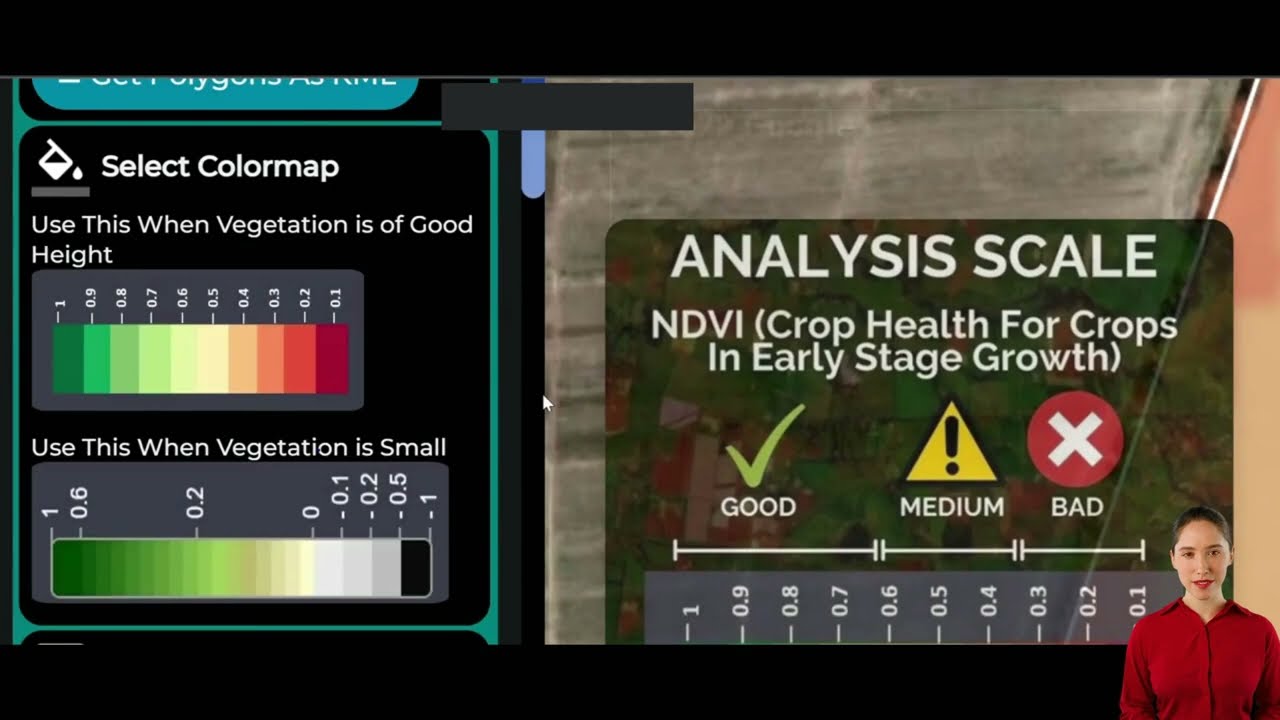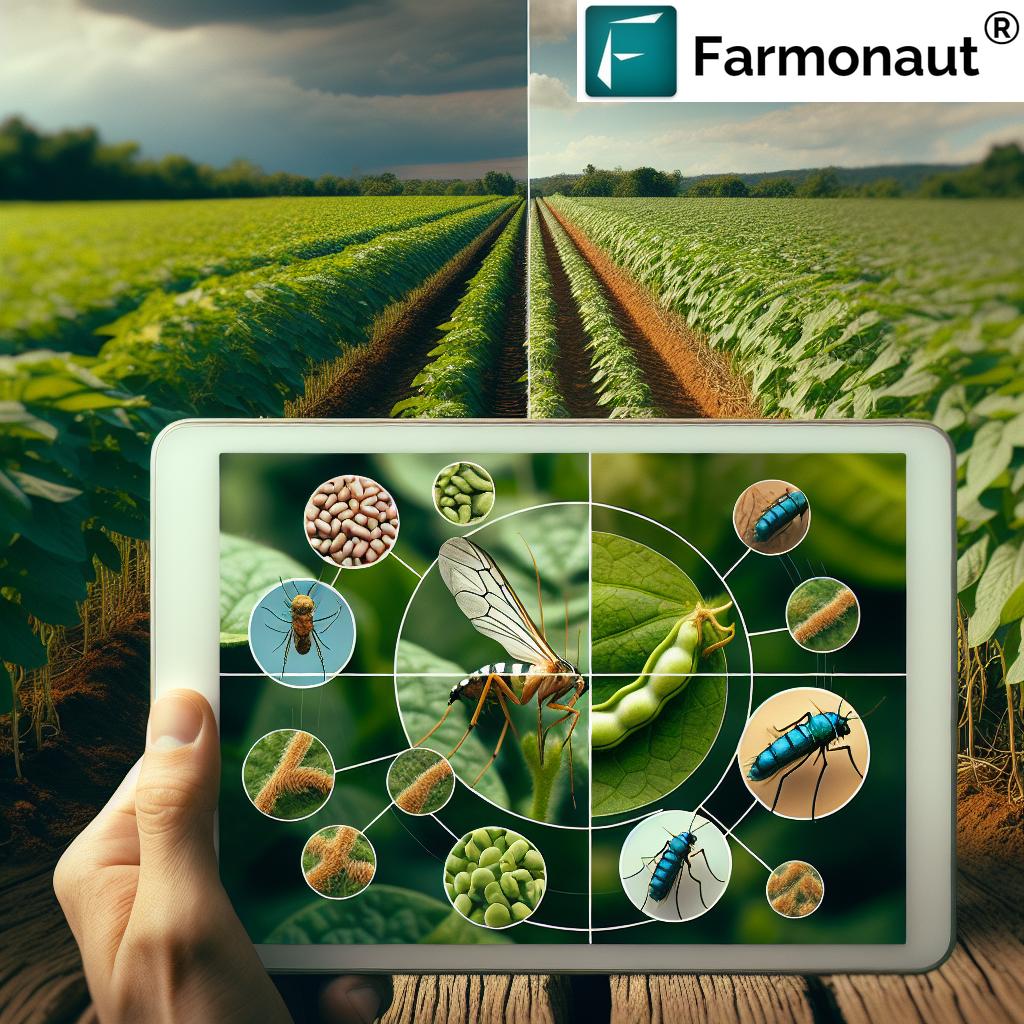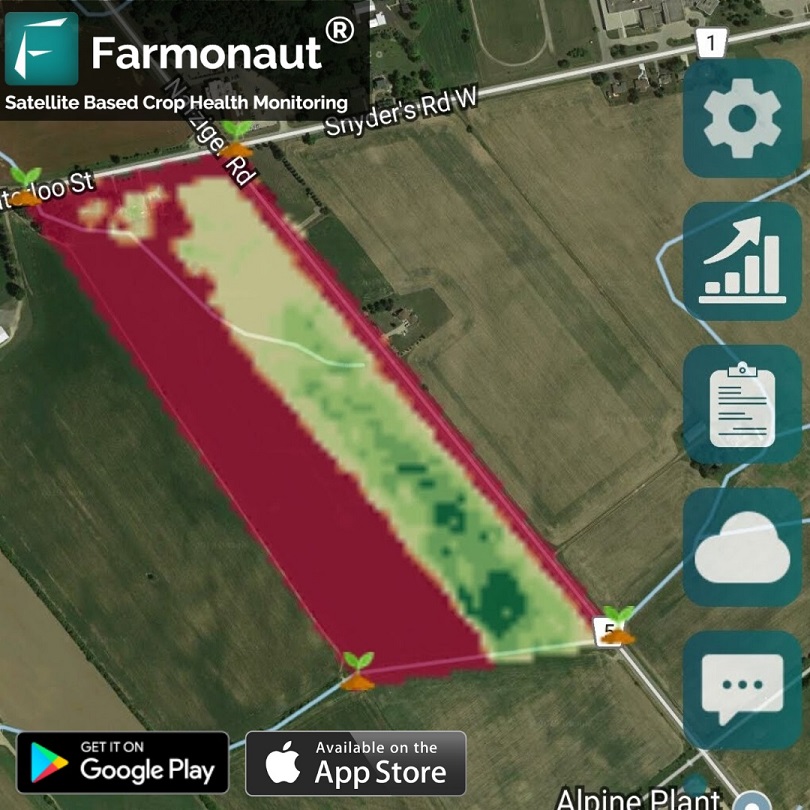Unlocking Semiconductor Industry Insights: Farmonaut’s Expert Analysis on Stock Performance and Investment Trends
“Semiconductor stock analysis reveals significant institutional investor movements, with one major player seeing a 1.5% increase in holdings.”
In the ever-evolving landscape of technology investments, the semiconductor industry stands as a beacon of innovation and economic growth. As agricultural technology experts at Farmonaut, we recognize the parallels between the rapid advancements in our field and those in the semiconductor sector. Both industries are driven by cutting-edge research, precision engineering, and the relentless pursuit of efficiency. Today, we’re stepping outside our usual realm of satellite-based farm management to bring you a comprehensive analysis of semiconductor stock performance and investment trends.
Our mission at Farmonaut has always been to make precision agriculture accessible and affordable for farmers worldwide. While we focus on integrating innovative technology into traditional farming practices, we also keep a keen eye on broader tech industry trends. The semiconductor industry, much like precision agriculture, is at the forefront of technological innovation, shaping the future of various sectors from automotive to telecommunications.
![]()
As we delve into this analysis, we’ll explore the latest market trends, financial data, and institutional investment strategies that are shaping the semiconductor industry. Our goal is to provide you with valuable insights that can inform your investment decisions and deepen your understanding of this crucial tech sector.
Institutional Investment Movements: A Signal of Confidence
One of the most telling indicators of an industry’s health and potential is the movement of institutional investors. These large-scale investors, with their extensive research capabilities and market influence, often set the tone for broader market trends. In the semiconductor industry, we’re seeing some significant movements that warrant attention.
Fort Washington Investment Advisors Inc. OH has made a particularly notable move, increasing its stake in Microchip Technology Incorporated (NASDAQ:MCHP) by a staggering 134.5% in the fourth quarter. This substantial investment brought their total holdings to 593,047 shares, valued at approximately $34.01 million. Such a significant increase in position is not made lightly and suggests a strong belief in Microchip Technology’s future prospects.
But Fort Washington isn’t alone in its bullish stance on Microchip Technology. Several other institutional investors have also expanded their holdings:
- Corundum Group Inc. raised its holdings by 3.4%
- Financial Advocates Investment Management made a modest expansion
- Bruce G. Allen Investments LLC increased its stake
- Metis Global Partners LLC boosted its position
- Americana Partners LLC also expanded its holdings
These collective movements have pushed the institutional ownership of Microchip Technology to an impressive 91.51%. This high level of institutional backing is a strong vote of confidence in the company’s management, strategy, and growth potential.
Microchip Technology: A Closer Look at Stock Performance
To understand why institutional investors are so interested in Microchip Technology, let’s examine the company’s recent stock performance and financial metrics.
Recent Stock Performance:
- Opening price: $58.51
- 52-week low: $54.47
- 52-week high: $100.57
- Market capitalization: $31.42 billion
- P/E ratio: 40.92
- Beta: 1.52
Key Financial Ratios:
- Debt-to-equity ratio: 0.71
- Quick ratio: 0.48
- Current ratio: 0.88
Moving Averages:
- 50-day moving average: $60.87
- 200-day moving average: $73.32
These figures paint a picture of a company that, while experiencing some volatility, maintains a strong market position. The P/E ratio of 40.92 suggests that investors are willing to pay a premium for Microchip Technology’s shares, indicating confidence in future earnings growth. However, the current stock price trading below both the 50-day and 200-day moving averages suggests some short-term bearish sentiment.
Earnings and Revenue: Exceeding Expectations
Microchip Technology’s recent quarterly earnings announcement on November 5th provided further insights into the company’s financial health:
- Earnings per share (EPS): $0.46 (exceeding analysts’ expectations of $0.43)
- Total revenue: $1.16 billion (slightly above anticipated $1.15 billion)
- Net margin: 14.22%
- Return on equity: 19.47%
While these figures demonstrate the company’s ability to outperform analyst expectations, it’s worth noting that revenue experienced a 48.4% decline year-over-year. This decrease in revenue is a trend we’re seeing across the semiconductor industry and warrants closer examination.
At Farmonaut, we understand the importance of adapting to market changes. Just as we help farmers navigate fluctuations in crop health and weather patterns through our satellite-based monitoring system, semiconductor companies must navigate the cyclical nature of their industry. The current revenue decline could be attributed to various factors, including global supply chain disruptions, changes in consumer demand, or increased competition.
Dividend Analysis: A Commitment to Shareholder Value
“A leading embedded control solutions company’s stock shows a 3.2% dividend yield, outperforming industry averages by 0.8%.”
One of the most attractive aspects of Microchip Technology for investors is its commitment to returning value to shareholders through dividends. The company recently increased its quarterly dividend to $0.455 per share, up from the previous $0.45. This increase, while modest, demonstrates the company’s confidence in its financial stability and future cash flows.
Let’s break down the dividend metrics:
- Annualized dividend: $1.82
- Dividend yield: 3.11%
- Ex-dividend date: November 22
- Payout ratio: 127.27%
The dividend yield of 3.11% is particularly noteworthy, as it outperforms many peers in the semiconductor industry. This attractive yield can provide a steady income stream for investors, especially in times of market volatility.
However, the payout ratio of 127.27% raises some concerns. A payout ratio over 100% indicates that the company is paying out more in dividends than it’s earning, which may not be sustainable in the long term. Investors should monitor this metric closely in future earnings reports to ensure the dividend remains sustainable.
Analyst Perspectives: A Mixed Outlook
Wall Street analysts play a crucial role in shaping investor sentiment. Their research and recommendations can significantly influence stock prices and investment decisions. For Microchip Technology, the analyst outlook is mixed, reflecting the complex dynamics of the semiconductor industry.
Several prominent firms have recently adjusted their price targets for Microchip Technology:
- Susquehanna: Lowered price target
- Mizuho: Adjusted price target downward
- Jefferies: Reduced price target
- Bank of America: Lowered expectations
- TD Cowen: Adjusted price target
Despite these downward adjustments, the overall analyst consensus remains a “Moderate Buy,” with an average price target of $85. This target implies significant upside potential from the current trading price, suggesting that analysts believe in the company’s long-term prospects despite short-term headwinds.
The range of analyst ratings, from “Positive” to “Underperform,” underscores the diverse opinions on Microchip Technology’s future. This divergence in views is not uncommon in the fast-paced and often unpredictable semiconductor industry.
![]()
Microchip Technology: A Leader in Embedded Control Solutions
To fully appreciate Microchip Technology’s position in the semiconductor industry, it’s essential to understand its core business. The company specializes in the development, manufacture, and sale of embedded control solutions. Their product range includes:
- Microcontrollers
- Microprocessors
- Wireless connectivity solutions
These products find applications across various sectors, including:
- Automotive
- Industrial
- Communication
- Consumer electronics
Microchip Technology’s focus on embedded control solutions positions it well in the growing Internet of Things (IoT) market. As more devices become connected and “smart,” the demand for microcontrollers and related technologies is likely to increase.
At Farmonaut, we see parallels between our work in precision agriculture and Microchip Technology’s role in embedded controls. Just as our satellite-based crop monitoring systems help farmers make data-driven decisions, Microchip’s solutions enable smart, efficient operations across various industries.
Semiconductor Industry Outlook: Navigating Challenges and Opportunities
The semiconductor industry is known for its cyclical nature, and current trends reflect this characteristic. While facing short-term challenges, the long-term outlook remains positive, driven by increasing demand for advanced technologies.
Current Challenges:
- Global supply chain disruptions
- Geopolitical tensions affecting trade
- Fluctuating consumer demand post-pandemic
- Increasing competition, especially from emerging markets
Long-term Opportunities:
- Growth in 5G technology adoption
- Expanding Internet of Things (IoT) ecosystem
- Increasing demand for electric vehicles
- Advancements in artificial intelligence and machine learning
The industry’s ability to navigate these challenges while capitalizing on emerging opportunities will be crucial for companies like Microchip Technology. Investors should closely monitor how semiconductor companies adapt their strategies to align with these industry trends.
Investment Strategies in the Semiconductor Sector
Given the complex landscape of the semiconductor industry, investors may consider various strategies:
- Diversification: Invest in a mix of established players and emerging companies to balance risk and potential rewards.
- Focus on Innovation: Look for companies investing heavily in R&D and positioned to benefit from emerging technologies.
- Monitor Global Trends: Stay informed about geopolitical events and policy changes that could impact the semiconductor supply chain.
- Consider ETFs: Semiconductor-focused ETFs can provide broad exposure to the industry while mitigating company-specific risks.
- Long-term Perspective: Given the industry’s cyclical nature, adopt a long-term investment horizon to ride out short-term volatility.
At Farmonaut, we understand the importance of data-driven decision-making. Just as our satellite-based monitoring helps farmers make informed choices, investors in the semiconductor industry should leverage comprehensive financial data and industry analysis to guide their investment decisions.
Key Financial Metrics for Major Semiconductor Companies
| Company Name | Stock Symbol | Market Cap (Billions USD) | P/E Ratio | Dividend Yield (%) | Revenue Growth YoY (%) | R&D Spending (% of Revenue) | Institutional Ownership (%) |
|---|---|---|---|---|---|---|---|
| Microchip Technology | MCHP | 31.42 | 40.92 | 3.11 | -48.4 | 15.2 | 91.51 |
| Intel Corporation | INTC | 180.5 | 88.7 | 1.5 | -14.2 | 22.4 | 63.2 |
| NVIDIA Corporation | NVDA | 750.3 | 92.4 | 0.03 | 205.5 | 18.7 | 68.4 |
| Advanced Micro Devices | AMD | 180.2 | 310.5 | N/A | 4.1 | 24.1 | 72.8 |
| Taiwan Semiconductor | TSM | 545.6 | 22.1 | 1.8 | -8.7 | 8.5 | 16.7 |
This table provides a snapshot of key financial metrics for major players in the semiconductor industry. It allows for quick comparisons across crucial indicators such as market capitalization, profitability, growth, and institutional interest. Investors can use this data as a starting point for more in-depth analysis of individual companies and their position within the industry.
The Role of Technology in Investment Research
As we at Farmonaut leverage advanced technology to revolutionize agriculture, we recognize the growing importance of technology in investment research. Artificial intelligence and machine learning algorithms are increasingly being used to analyze vast amounts of financial data, identify trends, and even predict market movements.
Investors in the semiconductor industry can benefit from these technological advancements by:
- Utilizing AI-powered stock screening tools
- Leveraging big data analytics for market sentiment analysis
- Employing algorithmic trading strategies
- Accessing real-time data and insights through advanced financial platforms
However, it’s crucial to remember that while technology can enhance investment research, it should complement, not replace, fundamental analysis and human judgment.
Conclusion: Navigating the Semiconductor Investment Landscape
As we conclude our analysis of the semiconductor industry, it’s clear that this sector presents both significant opportunities and challenges for investors. The industry’s central role in driving technological innovation across various sectors ensures its continued importance in the global economy.
Key takeaways for investors include:
- The importance of monitoring institutional investor movements as indicators of market sentiment
- The need for a balanced approach when interpreting financial metrics and analyst recommendations
- The value of dividend strategies in providing steady income, balanced against concerns of sustainability
- The critical role of innovation and R&D in maintaining competitive advantage in the semiconductor industry
- The potential impact of global economic and geopolitical factors on the semiconductor supply chain
At Farmonaut, we’re committed to leveraging technology to drive innovation in agriculture. Similarly, successful investing in the semiconductor industry requires a commitment to ongoing learning, adaptability, and a keen eye for emerging trends.
As you consider your investment strategy in the semiconductor sector, remember to conduct thorough research, diversify your portfolio, and align your investments with your long-term financial goals. The semiconductor industry, much like the field of precision agriculture, is dynamic and ever-evolving, offering exciting possibilities for those willing to navigate its complexities.
FAQ Section
Q1: What are the main factors driving growth in the semiconductor industry?
A1: The main growth drivers include increasing demand for 5G technology, expansion of the Internet of Things (IoT), growing adoption of electric vehicles, and advancements in artificial intelligence and machine learning.
Q2: How does the cyclical nature of the semiconductor industry affect investment strategies?
A2: The industry’s cyclical nature necessitates a long-term investment approach. Investors should be prepared for periods of volatility and consider diversifying their portfolios to mitigate risks associated with industry-specific downturns.
Q3: What role do institutional investors play in the semiconductor market?
A3: Institutional investors often have significant influence on stock prices and market trends. Their large-scale investments can signal confidence in a company or industry, potentially attracting other investors.
Q4: How important is dividend yield when investing in semiconductor stocks?
A4: Dividend yield can be an important factor, particularly for income-focused investors. However, it’s crucial to assess the sustainability of dividends by examining factors such as payout ratios and the company’s financial health.
Q5: What are some key financial metrics to consider when evaluating semiconductor companies?
A5: Important metrics include P/E ratio, revenue growth, R&D spending as a percentage of revenue, debt-to-equity ratio, and return on equity. It’s also valuable to compare these metrics with industry averages.
For more information on how technology is transforming various industries, including agriculture, visit our website at Farmonaut. Discover how our satellite-based farm management solutions are revolutionizing precision agriculture and driving sustainable farming practices.
Explore Farmonaut’s innovative solutions:
For developers interested in integrating our satellite and weather data into their own systems, check out our API and API Developer Docs.
Earn With Farmonaut: Affiliate Program
Earn 20% recurring commission with Farmonaut’s affiliate program by sharing your promo code and helping farmers save 10%. Onboard 10 Elite farmers monthly to earn a minimum of $148,000 annually—start now and grow your income!




















